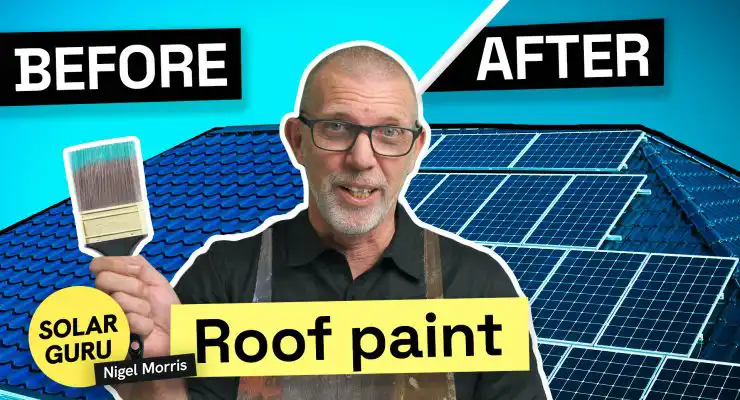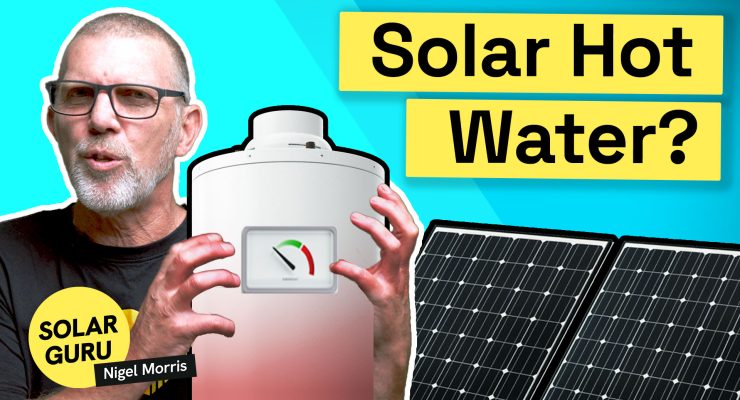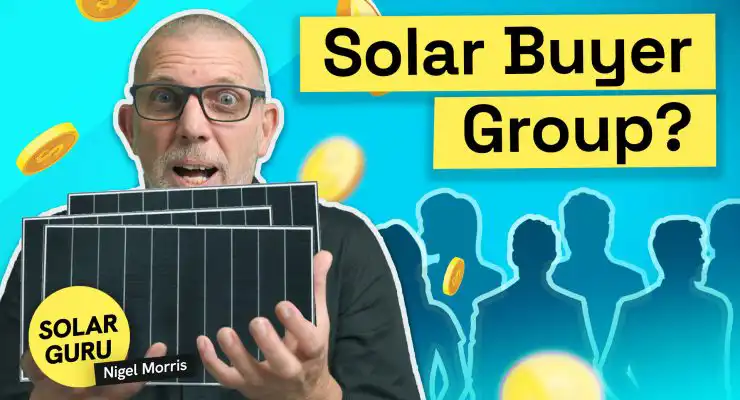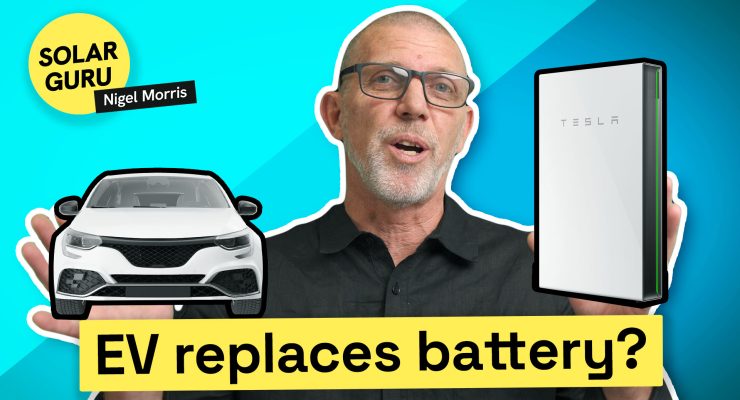
What the Guru says
Hi Solar Guru – will I be able to plug my electric car into the house, and the car will also be my house battery?
I looove this technology. it's what makes electric vehicles so exciting. However in Australia it's not really possible yet, because of regulatory hurdles.
The day will come when that changes. So in the future it's definitely something to watch out for. The good news is today, there are a number of vehicles that allow you to plug and extension cord in an run a small number of loads directly of the electric vehicle's battery.
And of cause you can charge that electric vehicle directly of your solar system. So it's early day, do not get hung up on it, but there are huge benefits to electrifying your transport.
Will EVs be integrated into the home energy infrastructure as a backup?
From a technical aspect, Electric Vehicles can be plugged into a house’s energy infrastructure and serve as a backup power source in certain situations. This capability is known as vehicle-to-home (V2H) or vehicle-to-grid (V2G) technology, depending on the specific application.
Red tape is stopping the opportunity right now
Unfortunately, the red tape of the Australian energy regulation has not yet freed this opportunity; only some EV manufacturers have enabled their vehicles to take hold of this opportunity. Tesla, for example, does not like their vehicles to be plugged into the home infrastructure to become the home’s battery, while the Nissan Leaf has gained this capacity.
So, for now, we will have to be content with various trials. For example, the ACT Government has gone live with a V2G trial to demonstrate the technical possibilities and economic benefits. Called the Realising Electric Vehicle to Grid Services (REVS), the trial has been running for 3 years.
In the trial, 51 Nissan Leaf cars were used to create additional grid support for the local electricity grid during high demand. As part of the REVS, a bidirectional charging system, the power from the 51 Leaf’s batteries can be used to be channelled into the local grid to be used by other devices in the general population’s homes.
If this technology works as planned, then during periods of very high electricity use, e.g. heatwaves or cold snaps, the backup of the EV batteries can underpin grid stability.
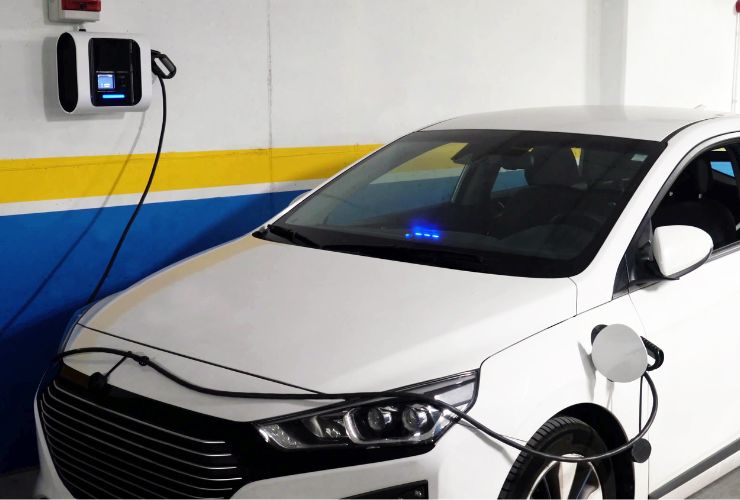
Vehicle to Home (V2H) – how it will work
V2H charging, while still in its early stages of development, can revolutionise how we think about home energy. By integrating EVs into the home energy infrastructure, we can reduce our reliance on fossil fuels, improve grid reliability, utilise our solar system more effectively and save money on our electricity bills.
In a V2H setup, an EV is connected to a residence’s electrical system using a specialised charging station or a hybrid inverter. This allows the EV’s battery to power the home during an outage or as a supplemental energy source. In a typical operation, it reduces the reliance on the grid.
Should there be a power cut, the energy stored in the EV’s battery can be used to power essential appliances or even the entire house, depending on the battery’s capacity and the house’s power needs.
The car’s battery could also supply the home at night and get filled via solar power dusting the day.
Vehicle to Grid (V2G) is the way of the future
V2G technology is when the power flows both ways, from the grid to the EV to charge it and from the EV to the grid to support it.
In addition, the EV battery can also serve as a backup power source for the home. This technology will also allow the shifting of power consumption and pricing because one can charge the EV during an off-peak tariff rate and then send this power back into the grid during peak demand and make some money from this activity.
It’s important to note that V2H and V2G technologies require specific smart energy equipment and new infrastructure to facilitate the bidirectional power flow. Of course, it all has to be undertaken safely.
Right now, not all EV models support V2H or V2G functionality, and it is up to the Federal Government to push for a realisation of this technology and a uniform set of platforms and technological capabilities.
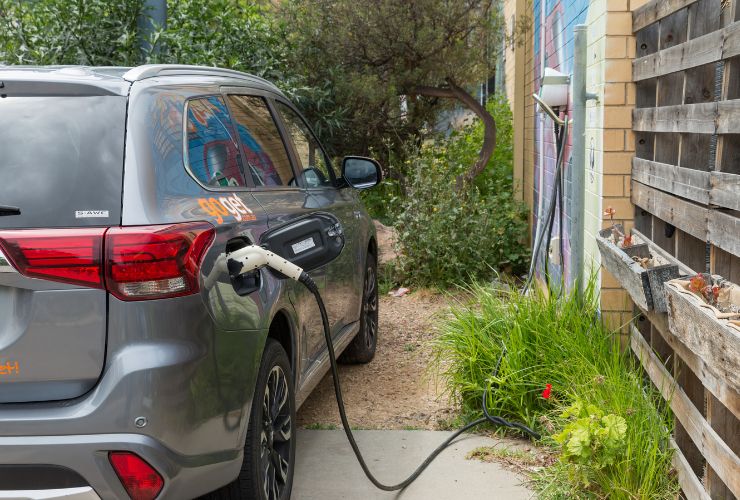
So let us go for it
Now while it has been easy for me to write down all these various information and opportunities (Because all of this activity means we need a smaller grid, and this will save billions in grid infrastructure costs), in reality, the legislative framework to make these things possible is stuck in the energy bureaucracy and self-interested blockages for years.
So till the Federal and State Governments show a willingness to cut through the crap and make it happen, we will read about it, see TV shows about it, and see it happen in other countries, but for now – we are now allowed to do it. Time from some leadership action, I say, so EVs can contribute to the resilience and flexibility of the electrical grid while providing backup power to homes when needed.
